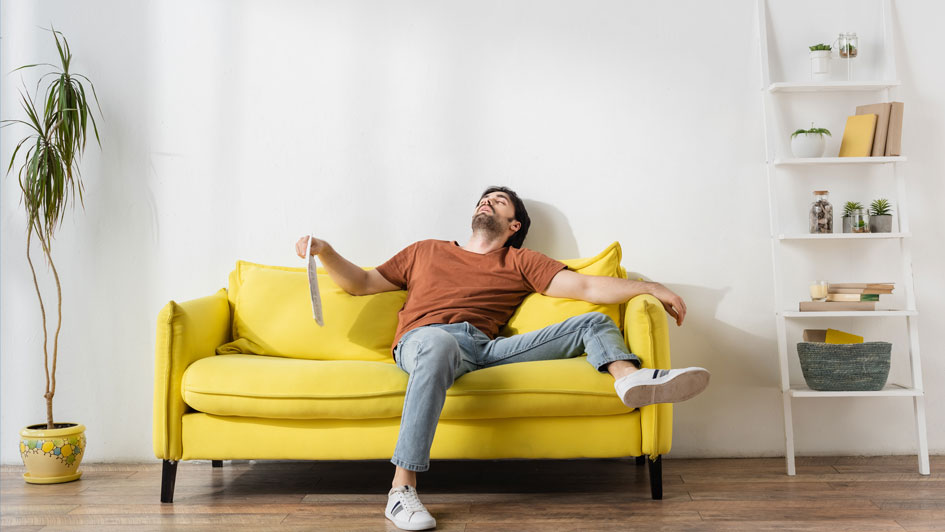
Every floor in your home should be a sanctuary that’s warm and toasty in the winter season and cool and comfortable in the summer. However, owners of some two-story homes find the upper floor is stubbornly hotter or colder than the first floor.
This could just be caused by the fact that most thermostats in a house are on the ground floor, which is where people spend the the majority of time—in the living room, kitchen, etc.—so as a result they tend to set the temperature according to how it feels on the first floor.
However, temperature variations between the upstairs and downstairs could also be because of problems with your HVAC system. Some of these challenges can be resolved somewhat quickly while others might necessitate more extensive and costly fixes. Here, the team at GV Heating & Air will help you solve why the upstairs of your home is hotter than downstairs, or vice versa.
Why Is It Hotter Upstairs?
The phenomenon of the upstairs of a two-story home getting hotter than the downstairs can be attributed to several factors. First, heat rises, so it’s natural for the second floor of a home to get hotter than the ground floor. Lack of insulation in the attic or roof can worsen this problem by permitting heat transfer from the roof into the upstairs rooms.
Another common reason is that the air conditioning is not big enough to cool the entire home, causing it to have difficulty cooling the upstairs sufficiently.
To tackle these issues, homeowners could install more insulation in the attic and make sure their home has sufficient ventilation. If there’s concern the AC is the correct size for the home, call an experienced HVAC company like GV Heating & Air inspect the unit. A qualified professional also can help select a unit that's better suited for your home if you need air conditioning installation or replacement.
Why Is My Upstairs So Cold/Not Heating?
When the downstairs of your home is warm, but it’s extremely chilly upstairs, that can cause a frosty night for anyone whose bedrooms are on the upper floor. The most common explanations for an upstairs not heating like it is supposed to are the insulation levels and the ductwork.
Inadequate insulation lets cold air to leak through the home’s attic or walls and contribute to heat loss, creating colder temperatures upstairs. It’s important to make sure your home has a deep, level layer of insulation in the attic and adequate insulation in the walls to keep the cold out and the heat inside.
The ductwork in a home plays a very important role in distributing conditioned air throughout different areas of the building. However, problems with the ductwork can result in the upstairs being colder than the main level. A common cause for this is improper airflow balance. The ducts may not be the right size or design, resulting in an uneven distribution of air between the floors. This can cause more warm air to go downstairs, causing insufficient airflow—which is the heated air—on the upper story.
Another factor with ductwork is the placement of the supply and return vents. If there are fewer vents on the upper story or they are not correctly placed, it can limit air circulation and cause inferior heating or cooling. In addition, leaks or gaps in the ductwork can cause air loss, lowering the overall efficiency of the HVAC system and exacerbating the temperature difference.
To understand why the upstairs is colder than the downstairs, homeowners should hve their ductwork inspected by experienced HVAC pros like the team at GV Heating & Air to identify any imbalances, leaks or inadequacies. Sealing leaks and installing more vents or adjusting existing ones can help enhance airflow and ensure a more even temperature balance between the upstairs and downstairs.
How You Can Fix a Hot or Cold Upstairs?
If your upstairs is hotter or colder than the rest of your house, an HVAC zoning system could be a useful solution.
An HVAC zoning system separates the household into distinct zones, which each have their own thermostat and damper system so the homeowner can customize the heating or cooling of each zone.
This system can be particularly useful in instances where the upstairs of a multi-story home is very hot or really cold while the main floor is comfortable. By implementing a zoning system, homeowners can regulate the temperature independently in each zone, allowing them to address specific hot or cold spots effortlessly.
To discover more about an HVAC zoning system in Crystal and Twin Cities, call GV Heating & Air. We’ve developed and installed customized home comfort plans for many community members and are happy to show how an HVAC zoning system could benefit your home.
Why Is My Upstairs So Humid?
In addition to the upper story being hotter or colder than the rest of the house, another issue in multi-floor homes is when the higher levels are more humid than downstairs.
A frequent cause for excess upper floor humidity is inadequate ventilation on the upper floor, which can produce greater humidity levels. As is often the case with temperature differences between floors, insufficient insulation or sealing in the attic or walls may let warm, humid air from outdoors infiltrate the upstairs rooms. In addition, if there are any leaks or plumbing problems on the upper floor, that can also cause unwanted moisture in that section of a home.
To fix humidity problems, homeowners can add more ventilation by installing fans or opening windows to promote airflow. Appropriate levels of insulation in the attic and better sealing the attic and walls can help prevent external moisture from entering the upstairs. Finding and repairing any leaks or plumbing issues is also imperative.
Depending on the levels of moisture found in the home, a whole-home dehumidifier could be another valuable tool to manage humidity in your home.



